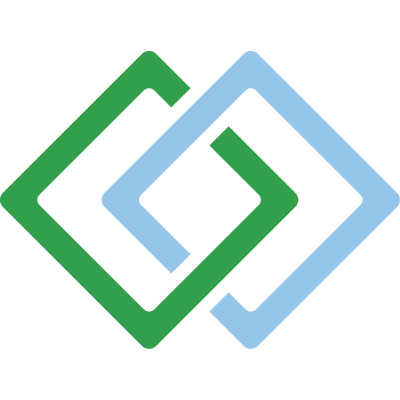
@ShahidNShah


In the dynamic landscape of healthcare, the persistent challenge of extended patient wait times necessitates innovative solutions.
This article delves into the promising realm of blockchain technology, exploring its potential to address this issue and provide a transparent, efficient solution for tracking patient queues.
Amidst the complexities of modern healthcare, the need for timely and efficient patient care has become increasingly critical. The evolving landscape demands innovative approaches to address the challenges posed by extended wait times. Blockchain technology emerges as a promising solution, offering the potential to streamline processes and enhance overall patient satisfaction.
Within the intricate web of healthcare delivery, prolonged waiting periods stand as a significant hurdle. Beyond mere inconvenience, extended wait times can adversely affect patient satisfaction and the overall quality of healthcare.
Patients, often already dealing with health concerns, may find their experiences further burdened by delays in receiving essential care. A comprehensive understanding of the magnitude of this problem is crucial for the exploration of effective and lasting solutions.
Transparency is a foundational pillar of patient trust and satisfaction within the healthcare sector. In the context of managing patient wait times, the significance of transparent healthcare operations cannot be overstated.
Patients deserve visibility into the processes that govern their care, fostering trust and confidence in the healthcare system. Blockchain, with its inherent transparency features, offers a novel approach to addressing this fundamental need.
To comprehend the potential of blockchain in healthcare queue tracking, it is essential to gain a more nuanced overview of this revolutionary technology. At its core, blockchain is a decentralized, distributed ledger that records transactions across multiple computers, ensuring a secure and tamper-proof record.
This paradigm shift in record-keeping introduces a level of transparency and data integrity that is particularly relevant in the context of managing patient queues.
Blockchain’s immutability ensures that once a record is added to the chain, it cannot be altered or deleted. This feature not only safeguards the integrity of patient data but also enhances security, mitigating the risks associated with traditional centralized systems.
Blockchain, as a transformative force, redefines transparency in healthcare operations. From ensuring data integrity to enabling decentralized access, the technology introduces a new level of trust and efficiency in patient queue tracking.
The distributed nature of blockchain ensures that each transaction is verified by a network of nodes, reducing the risk of errors and fraudulent activities. This heightened transparency builds a foundation for a more accountable and patient-centric healthcare system.
One of the key advantages of blockchain in healthcare queue tracking lies in its ability to provide real-time visibility into patient queues, revolutionizing the way healthcare providers manage and optimize their operations.
Through the utilization of a decentralized and transparent ledger system, blockchain technology empowers healthcare providers with up-to-date and accurate information on patient wait times. This newfound transparency offers a multifaceted solution to the longstanding challenges associated with patient queue management.
This real-time visibility ensures that healthcare providers have an immediate understanding of the current demand for services, allowing for more proactive and data-driven decision-making.
As patient queues dynamically evolve throughout the day, healthcare facilities equipped with blockchain technology can adapt swiftly to changing circumstances.
This adaptability is paramount in optimizing resource allocation and ensuring that staff and facilities are utilized efficiently.
By leveraging real-time data on patient queues, the facility experienced a remarkable 35% reduction in customer waiting times. This significant improvement not only positively impacted patient satisfaction but also demonstrated the tangible benefits of blockchain integration in healthcare queue management.
Addressing concerns related to patient privacy and data security is paramount when integrating blockchain solutions. This section navigates the intricate balance between technological innovation and maintaining the highest standards of patient confidentiality.
While blockchain inherently provides robust security through encryption and decentralization, ensuring compliance with healthcare data protection regulations remains a priority.
Blockchain’s transparency extends to how patient data is handled, offering a unique solution to the challenge of consent and data ownership.
Smart contracts, a feature of blockchain, can be programmed to manage patient consent, ensuring that individuals have control over who accesses their health information.
This innovative approach aligns with the growing emphasis on empowering patients with greater control over their healthcare data.
Discussing strategies for the seamless integration of blockchain solutions into established healthcare systems is crucial. This involves considerations for interoperability and collaborative efforts among different stakeholders in the healthcare ecosystem.
The integration process should be approached with careful planning, considering the existing infrastructure and workflows to minimize disruption while maximizing the benefits of blockchain in improving patient wait times.
Blockchain’s potential impact extends beyond individual healthcare facilities. By fostering interoperability, healthcare providers can create a network that shares patient queue data securely and efficiently.
This collaborative approach ensures a more holistic and patient-centric view of healthcare operations, allowing for better-informed decision-making and resource allocation.
Exploring the role of smart contracts in healthcare queue management, this section emphasizes how these self-executing contracts can automate processes. Smart contracts are programmable scripts that automatically execute predefined actions when specific conditions are met.
In the context of patient queue tracking, smart contracts can automate tasks such as appointment scheduling, resource allocation, and notifications, contributing to both transparency and operational effectiveness.
A notable application of smart contracts in queue management involves automated notifications for patients. When integrated with a blockchain-based system, smart contracts can trigger personalized notifications to patients, keeping them informed about appointment timings, potential delays, and other relevant updates.
This proactive communication not only improves patient satisfaction but also contributes to a more engaged and informed patient community.
Examining the regulatory landscape surrounding the implementation of blockchain in healthcare is vital. This section highlights the need for compliance with existing regulations and explores potential developments that could facilitate the adaptation of regulations to accommodate blockchain innovations.
As blockchain technology continues to evolve, collaboration between healthcare stakeholders and regulatory bodies becomes essential to establish clear guidelines and standards for its implementation.
For healthcare systems that operate across borders, compliance with data protection regulations becomes an intricate challenge. Blockchain’s decentralized nature offers a potential solution by providing a secure and standardized framework for managing patient data.
Collaborative efforts at an international level can facilitate the development of cross-border standards, ensuring that blockchain applications in healthcare adhere to global data protection requirements.
Looking ahead to the future of blockchain in healthcare queue tracking, this section discusses emerging trends, technological advancements, and potential developments that could further enhance transparency and efficiency in patient wait times.
The integration of artificial intelligence (AI) with blockchain stands out as a promising avenue. AI algorithms can analyze historical patient data, predict peak hours, and optimize resource allocation, contributing to more accurate and proactive queue management.
Another noteworthy trend is the integration of blockchain with the Internet of Things (IoT). By connecting devices and sensors within healthcare facilities to a blockchain network, real-time data on patient movements, wait times, and resource utilization can be seamlessly captured.
This synergy can lead to more granular insights, allowing healthcare providers to make data-driven decisions for improved operational efficiency.
Summarizing the overall benefits that blockchain solutions bring to healthcare providers and patients, this section outlines the positive impacts on operational efficiency, increased patient satisfaction, and the potential transformation of the entire healthcare experience.
Blockchain’s impact on operational efficiency cannot be overstated. By providing real-time visibility into patient queues and automating processes through smart contracts, healthcare providers can optimize resource allocation, reduce wait times, and enhance the overall efficiency of healthcare service delivery.
This, in turn, contributes to a more cost-effective and streamlined healthcare system.
Patients, at the heart of healthcare delivery, stand to benefit significantly from blockchain-based queue tracking. Reduced wait times, proactive communication through smart contracts, and transparent access to their healthcare journey contribute to heightened patient satisfaction.
The trust engendered by transparent operations and secure handling of patient data fosters a positive patient-provider relationship.
Blockchain’s emphasis on data ownership and patient control aligns with the growing movement towards patient empowerment. Through secure and transparent management of health records, patients gain greater control over who accesses their data and for what purposes.
This empowerment not only ensures privacy but also encourages patients to actively participate in their healthcare decision-making processes.
As the healthcare industry continues to grapple with the challenges posed by patient wait times, blockchain technology emerges as a beacon of hope.
Through its decentralized, transparent, and secure features, blockchain has the potential to revolutionize queue tracking, offering benefits to both healthcare providers and patients.
The successful integration of blockchain into healthcare operations requires careful consideration of regulatory compliance, privacy concerns, and collaboration among stakeholders.
As technology evolves, the future holds exciting possibilities, and the synergy of blockchain with emerging technologies promises a more efficient, transparent, and patient-centric healthcare ecosystem.

Chief Editor - Medigy & HealthcareGuys.
Dr. Renee Dua, founder of Together by Renee, a healthcare assistant app that uses generative artificial intelligence, also offers an in-depth look at how the AI in her app can help patients and their …
Posted Jan 23, 2024 Artificial Intelligence Telehealth
Connecting innovation decision makers to authoritative information, institutions, people and insights.
Medigy accurately delivers healthcare and technology information, news and insight from around the world.
Medigy surfaces the world's best crowdsourced health tech offerings with social interactions and peer reviews.
© 2025 Netspective Foundation, Inc. All Rights Reserved.
Built on Jul 14, 2025 at 2:07pm